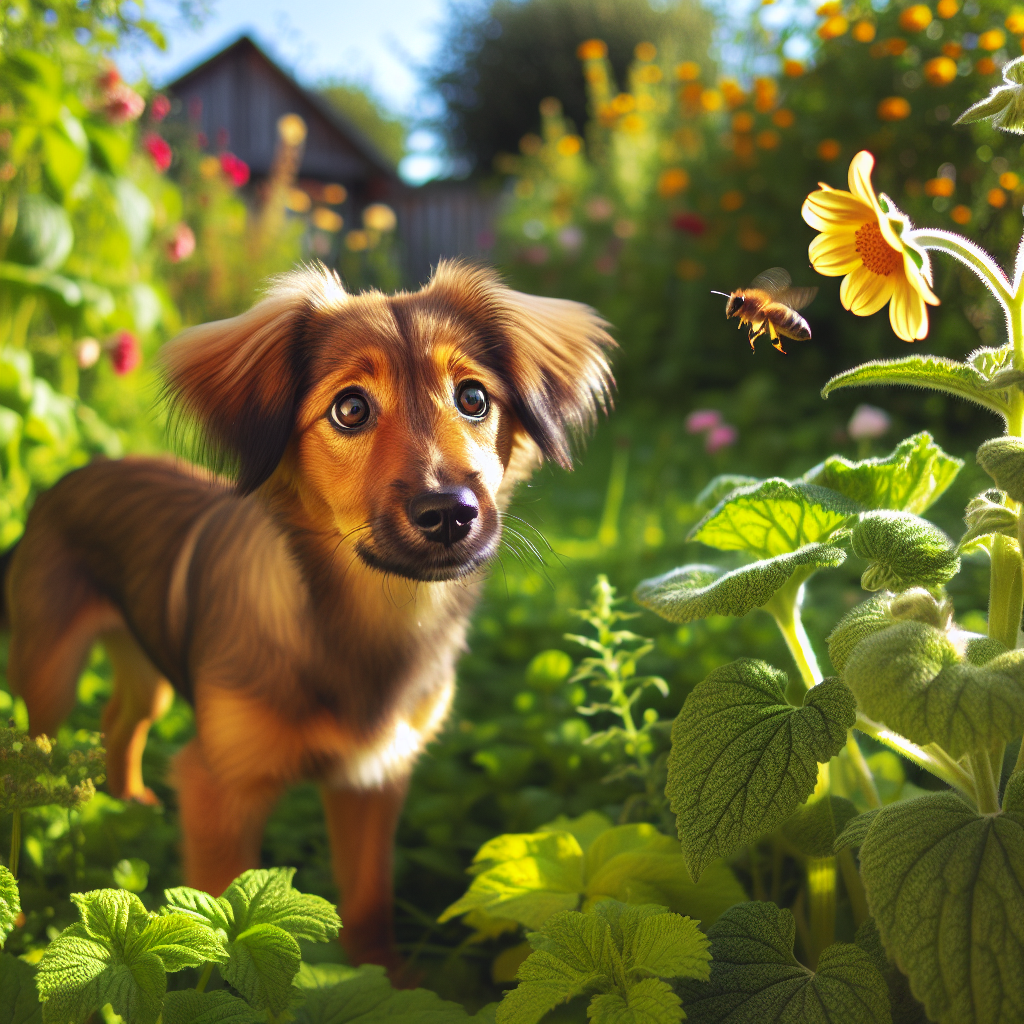===INTRO:===
The curious case of my dog’s encounter with a bee sparked not just a moment of panic but also a deep exploration into the world of canine interactions with insects. As pet owners, we are often faced with unexpected situations that can leave us feeling helpless. Imagine the dread when you see your beloved dog chasing after a buzzing creature, oblivious to the potential danger that lies ahead. This experience urges us to understand how our furry friends react to the buzzing world around them and how we can better protect them. Let’s delve into this fascinating incident and uncover insights that could arm you with knowledge for future encounters.
Unraveling the Mystery: My Dog’s Unexpected Bee Encounter
The day began like any other, with my dog, Max, frolicking in the garden under the warm sun. However, this idyllic scene took an unexpected turn when he spotted a bee hovering near a blooming flower. In a split second, Max lunged, determined to catch the tiny creature. What followed was a whirlwind of barking, buzzing, and my frantic attempts to intervene. The sheer surprise of witnessing my dog’s instinctual yet reckless behavior forced me to confront a pressing question: What could have possibly driven him to engage with a creature that could pose a threat?
As I rushed to pull Max away from the bee, I noticed the telltale signs of curiosity and excitement in his demeanor. His ears perked up, his tail wagged furiously, and his eyes were locked onto the buzzing insect with an intensity that was both alarming and fascinating. This instinctual chase is deeply rooted in a dog’s nature, showcasing their predatory drive and playful spirit. Yet, as I would soon learn, this seemingly innocent encounter could lead to a range of health issues if not managed properly.
Reflecting on this incident, I realized it was more than just a fleeting moment of chaos; it opened the door to understanding the complex dynamics between dogs and bees. Whether it’s a playful nudge or a full-on chase, the interaction can vary widely based on the dog’s personality, prior experiences, and even training. By examining these variables, we can better prepare ourselves to manage such encounters, ensuring our pets remain safe and sound while exploring the vibrant world around them.
A Detailed Analysis of Canine-Bee Interactions and Reactions
Understanding canine behavior when encountering bees requires a deep dive into the species’ instinctual traits. Dogs, by nature, are inquisitive and often driven by their senses. Their keen sense of smell draws them toward flowers, where they may inadvertently interact with bees. This unintentional engagement can lead to stings, which can cause pain and allergic reactions, becoming a serious concern for dog owners. Certain breeds, particularly those with high prey drives, may exhibit heightened curiosity toward buzzing insects, leading to more frequent encounters.
In most cases, a dog’s reaction to a bee can manifest in two distinct ways: excitement or avoidance. Some dogs will eagerly pursue and investigate, only to back off when stung. Others may show a more cautious approach, keeping their distance from the buzzing menace. It’s crucial for pet owners to observe their dog’s behavior with bees to identify whether they are naturally curious or overly aggressive. Understanding these behavioral patterns can not only help in preventing stings but also enrich the pet-owner relationship by fostering safer play interactions.
Moreover, it’s essential to equip ourselves with knowledge about potential allergic reactions. Just as with humans, dogs can experience varying degrees of sensitivity to bee stings. While some may endure minor discomfort, others could face severe allergic reactions, including swelling, difficulty breathing, or even anaphylaxis. Recognizing the signs of distress in your dog is vital—this includes excessive scratching, lethargy, or swelling around the face and muzzle. Being proactive and prepared can mean the difference between a small scare and a serious veterinary emergency.
===OUTRO:===
In conclusion, the curious case of my dog’s encounter with a bee serves as a valuable lesson for all pet owners. With a clear understanding of canine instincts and reactions, we are better equipped to protect our furry companions from unexpected insect interactions. Whether through heightened awareness, behavioral training, or emergency preparedness, we hold the keys to ensuring our pets experience the beauty of nature safely. So, the next time you find your dog chasing a bee, remember the insights shared here. Equip yourself with knowledge and remain vigilant; your dog’s well-being might just depend on it. Feel free to share your own experiences or questions in the comments below—let’s create a community of informed pet owners who prioritize the health and safety of our beloved companions.
Measuring Your Dog’s Height: A Comprehensive GuideUnderstanding How Dogs Become Infested with FleasUnderstanding the Lifespan of Pug Dogs: What to ExpectRelevant LinkRelevant LinkRelevant Link
